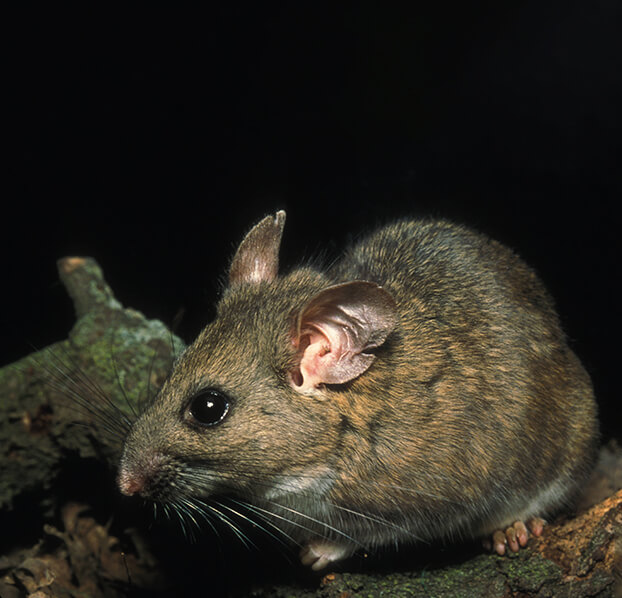
Species Information
Dusky-footed Woodrat

| Status |
Least Concern: species that have a widespread and abundant population and are not currently threatened. |
| Family | Cricetida |
| Description | Cinnamon-to-gray with long whiskers, rounded ears and furry tails |
| Habitat | Forests of live oak and willow trees with thick under brush |
| Food | Frogs, newts, toads and fish |
| Reproduction | Litters of one to four |
| Threats |
Natural predators |
| Range | California to British Columbia |
The Dusky-footed woodrat, a species of rodent in the Muroidea complex and superfamily, is one of the many types of rats found in California. Unlike what most people typically think of when they hear the word “rat” they are not common pests. The Dusky-footed woodrat is a medium-sized rodent measuring around 10 to 13 inches in length with a tail length of 6 to 8 inches. Their fur is typically grayish brown on top with a lighter brown or reddish-brown underside.
This woodrat is known for their excellent climbing ability and is often found nesting in trees and snags. Their nests, constructed from grasses, twigs, and bark, are often found in close proximity to one another. One unique behavior of the Dusky-footed woodrat is their penchant for collecting and arranging a wide variety of objects to decorate its nest, such as shiny objects, bones, and trinkets which earns them the nickname “Pack Rat”.
Omnivorous in nature, the Dusky-footed woodrat feeds on a variety of plant and animal materials, including seeds, fruits, nuts, insects, and small vertebrates. They also play a crucial role in seed dispersal, aiding in the diversity of plants in its habitat. The woodrat has a long lifespan for a rodent, with individuals living 5 to 7 years in the wild.
During the breeding season, the female Dusky-footed woodrat typically gives birth to one to three litters of pups per year, with an average litter size of 2 to 3 pups. The female constructs a large, spherical nest made of sticks, leaves, and other materials, where she gives birth and raises her young. However, the species faces predation from various predators such as owls, snakes, and mammals, and has developed defensive behaviors like freezing in place or emitting loud vocalizations when threatened.
The Dusky-footed woodrat is known for its adaptability to different habitats, including forests, woodlands, chaparral, shrublands, as well as human-modified areas like agricultural lands and urban areas. They are considered to be of least concern as it is common and widespread. However, habitat loss due to human development and habitat fragmentation remains a potential threat to their populations in some areas.
